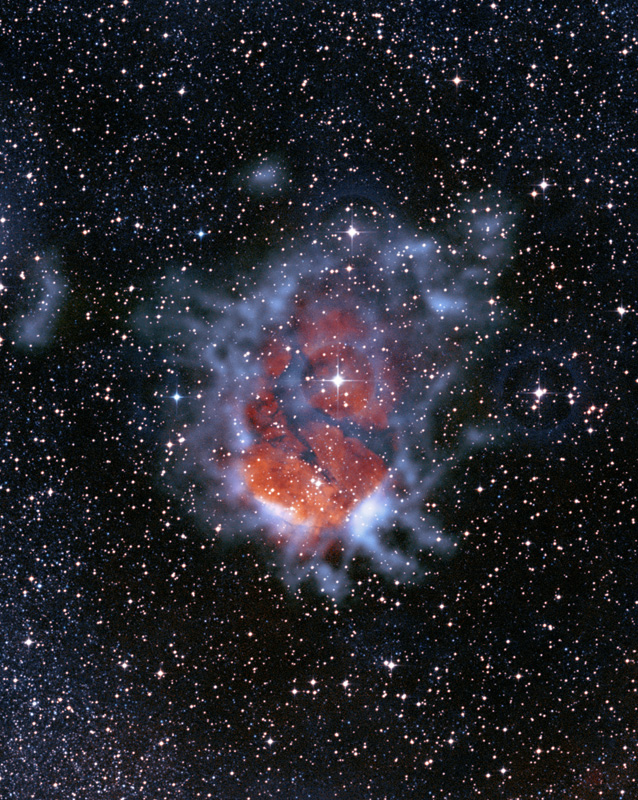[/caption]
Submillimeter astronomy used to be known as the last unexplored wavelength frontier. But this new image from the Atacama Pathfinder Experiment (APEX) telescope reveals the awesome power of submillimetre-wavelength astronomy, and shows another new frontier: a birthplace of new stars. An expanding bubble of ionized gas about ten light-years across is causing the surrounding material to collapse into dense clumps, creating new stars. Submillimetre light is the key to revealing some of the coldest material in the Universe, such as these cold, dense clouds.
The region, called RCW120, is about 4,200 light years from Earth, towards the constellation of Scorpius. A hot, massive star in its centre is emitting huge amounts of ultraviolet radiation, which ionizes the surrounding gas, stripping the electrons from hydrogen atoms and producing the characteristic red glow of so-called H-alpha emission.
As this ionized region expands into space, the associated shock wave sweeps up a layer of the surrounding cold interstellar gas and cosmic dust. This layer becomes unstable and collapses under its own gravity into dense clumps, forming cold, dense clouds of hydrogen where new stars are born. However, as the clouds are still very cold, with temperatures of around -250? Celsius, their faint heat glow can only be seen at submillimetre wavelengths. Submillimetre light is therefore vital in studying the earliest stages of the birth and life of stars.
The submillimeter waveband between the far-infrared and microwave wavebands.
The submillimetre-wavelength data were taken with the LABOCA camera on the 12-m Atacama Pathfinder Experiment (APEX) telescope, located on the 5000 m high plateau of Chajnantor in the Chilean Atacama desert. With LABOCA’s high sensitivity, astronomers were able to detect clumps of cold gas four times fainter than previously possible. Since the brightness of the clumps is a measure of their mass, this also means that astronomers can now study the formation of less massive stars than they could before.
The next generation of submillimeter telescopes is also being built on the plateau of Chajnantor. ALMA, the Atacama Large Millimeter/submillimeter Array will use over sixty 12-m antennas, linked together over distances of more than 16 km, to form a single, giant telescope. It is slated to be completed in 2012.
Source: ESO


Interesting. Thanks Nancy.